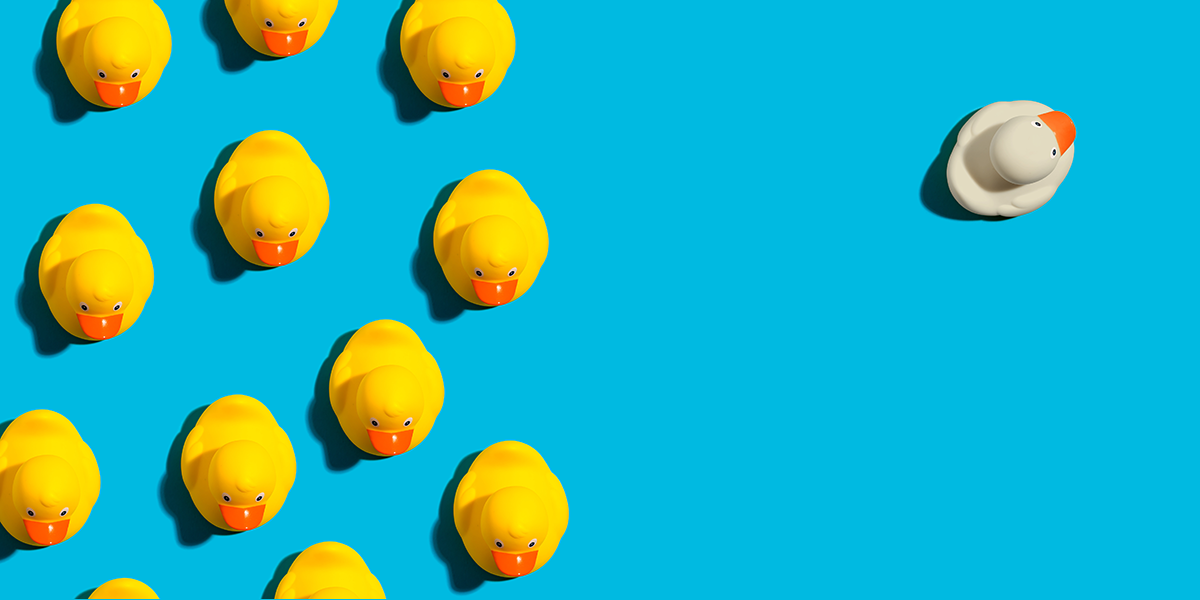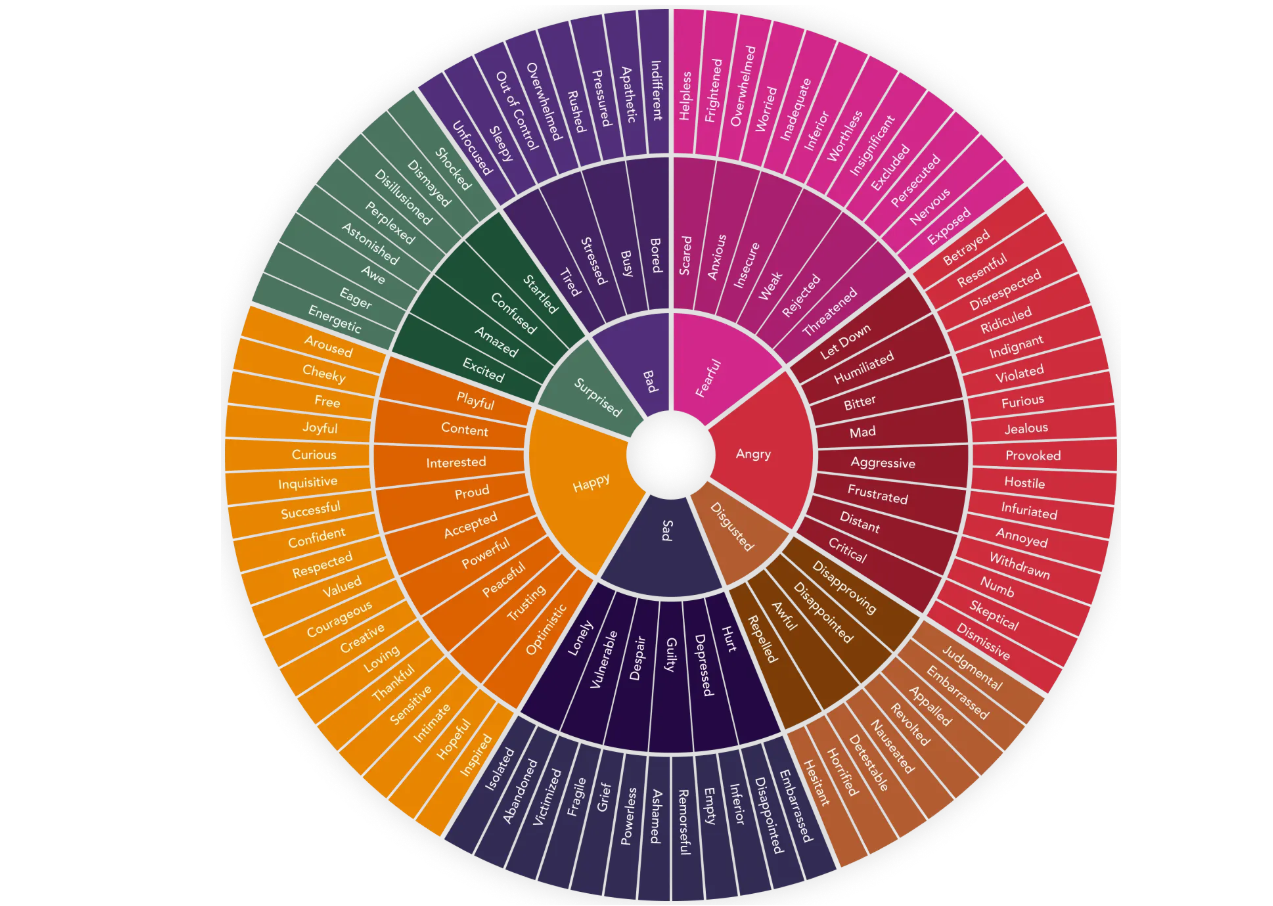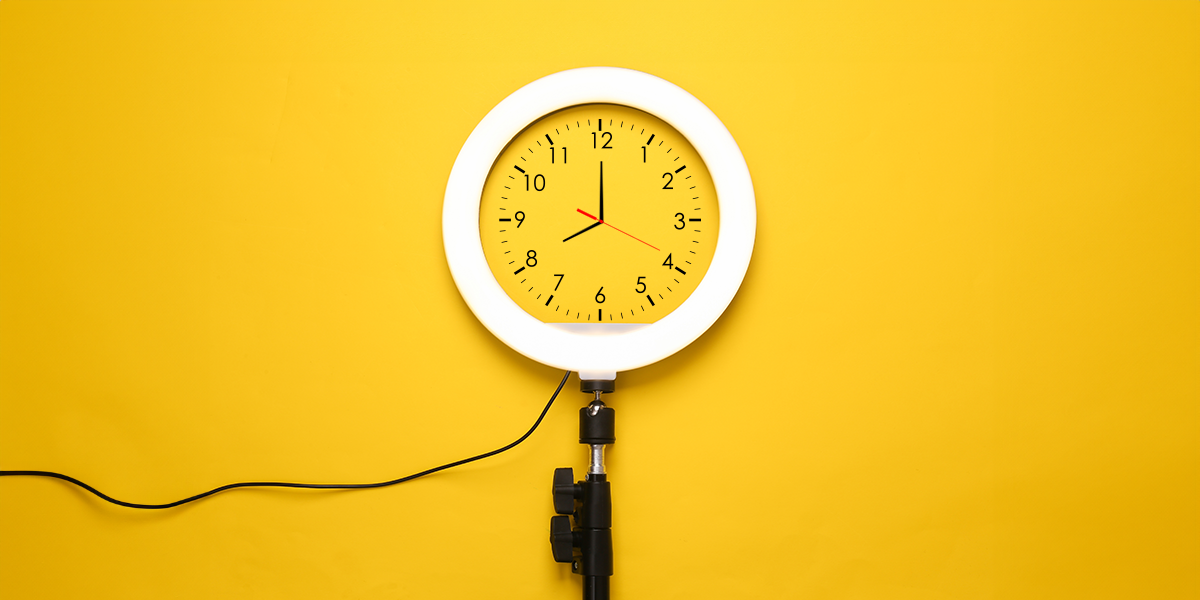
It’s easy to feel a lot of pressure when you’re in your 20s.
You start the decade out living at home, saying goodbye to your high school years, and looking forward to the future.
And somehow, over the next decade, you’re supposed to figure out what you want in life, and master all of the other adulting skills one needs to survive on their own.
It ain’t easy, especially if you’re like me, and spend a good chunk of your 20s feeling like everything in life is chaotic, confusing, and out of control.
I’m in my late 30s now, and despite the fact that the world has gotten more unpredictable as I’ve aged, I feel a much greater sense of contentment and inner peace.
It is because for the last five or six years, I’ve been actively working on my skill of self-mastery.
And gosh, so much of what I’ve learned on this journey would have been helpful in my 20s!
If I’d been better at being in touch with my true emotions and thoughts in my 20s, life would have been a lot easier, and I would have gotten where I am now a lot faster.
Lucky for you, I’m going to spill the secrets of self-mastery in this article. I’ll tell you what it is, explain what practices have worked for me on this journey, and give you tips on how to integrate them into your own life as a twenty-something.
What is self-mastery? Breaking it down
Self-mastery is the practice of aligning your actions with your most closely held values and personal goals. In practice, this means finding ways to analyze, understand, accept, and reframe or redirect your thoughts, emotions, and behaviors.
Many people go through life—especially young adulthood—in a state of constant reaction. They respond to life’s challenges, difficult relationships, and unexpected turns without much introspection or forethought.
Those who practice self-mastery try to break that habit, and instead bring consciousness and intent to the decisions they make and actions they take every day.
I’ll admit, I don’t love the phrase “self-mastery,” though there are few other terms we can use for this concept.
The word “master” is very loaded, and often carries implications of suppression, restriction, and cruel discipline.
To understand what self-mastery means, we need to first dispel the idea that we are going to be restricting ourselves, or practicing anything that looks like cruelty. Quite the opposite—self-mastery is about freeing ourselves through self-kindess, dedication, and acceptance.
Ultimately, it is freeing, not oppressing.
The 5 core components of self-mastery
We’ve got a basic definition of self-mastery, but to go deeper, let’s look at the individual aspects that make up this mindfulness practice.
1. Self-awareness
Understanding your thoughts, emotions, and behaviors without judgment is the foundation of self-mastery. Self-awareness means regularly checking in with yourself, noticing patterns, and recognizing your authentic needs rather than what you think you should want or feel.
2. Emotional intelligence
This involves recognizing your emotions as they arise and responding to them thoughtfully rather than impulsively. When you develop emotional intelligence, you can experience difficult feelings without being controlled or immobilized by them.
3. Intentional action
Taking deliberate steps toward what matters most to you, even when it’s difficult, is where self-discipline and self-control come into play. But again, we’re not talking about rigid rules or restrictions—self-mastery involves conscious choices that align with your deeper values.
4. Consistent practice
Self-mastery isn’t something you achieve once and then move on. It requires showing up for yourself day after day. With consistency, small, regular actions compound over time to create meaningful change in your life.
5. A curious mindset
Approaching life with curiosity rather than judgment allows you to learn from every experience. Curiosity lets you to see challenges as opportunities to develop rather than threats to your identity. Instead of berating yourself when you make mistakes, your curious mind will respond with acceptance and compassion.
Practical methods for developing self-mastery
Understanding the concept behind self-mastery is one thing, but it’s not enough to simply get the idea. To develop self-mastery, you need to actively practice it as often as you can, until it becomes a habit.
The good news is, practicing self-mastery is typically a very rewarding experience. Yes, it will take some discipline, especially at first, when it may seem much easier to, say, spend another hour in bed scrolling TikTok instead of getting up and going for a morning walk. (Speaking from experience.)
Over time, as you discover which self-mastery practices work best for you, you’ll find that it becomes easier and easier to advance along the path. Eventually, you’ll get to where I am now—you look forward to your self-mastery rituals, and feel disappointed when you don’t get to them.
On that note, there is no “right way” to practice self-mastery. There are countless methods, and the ones that work best for me may fall flat for you. But below I’ve listed the ones I’ve enjoyed the most, and the ones I think would have served me best if I’d started them in my 20s.
Make a self-mastery schedule for check-ins
The first step toward self-mastery is finding ways to start checking in with yourself and analyzing your thoughts and emotions.
Because this probably isn’t a routine for you, the best way to get started is to identify a few points throughout the day when you can pause and take a moment to reflect on how you’re feeling, what you’re thinking, and what challenges you’re facing.
Take a look at your daily schedule and consider when you might have natural moments throughout the day to pause. It doesn’t have to be much—a ten- or 15-minute slot will work. Personally, I like to do my self-reflection in the morning, right after I wake up, before too many thoughts and experiences from the day creep in. Mornings also work well, because you can set an intention for how you want the day to go. However, if mornings aren’t your thing, consider taking twenty minutes before you go to bed, or even just using that random slot of time between classes or before work. Right now, you aren’t planning what you’ll do in that time—just looking for moments when you can hit pause and reflect. Once you’ve found your moments, set calendar or phone reminders to go off. Now comes your first self-discipline practice: Don’t hit “ignore” or “snooze” on these reminders. For at least a week, try taking them as seriously as you would any other appointment on your calendar.
Develop a journaling practice
Journaling creates a direct line to your inner thoughts and feelings. When we write things down, we externalize them, making them easier to examine objectively.
Many people resist journaling because they think they need to be “good writers” or have profound insights. But when you’re journaling, you’re not “creating content” that is meant to be shared with anyone. It’s just for you, and therefore it should be messy stream-of-consciousness writing.
If anyone looked at my journals, most of it would be incomprehensible, and a lot of it would be very boring—often mundane reflections on everyday events, and a lot of speculation about what’s coming up in my schedule.
But over time, as you journal, your mind will start digging up gems that help you truly understand yourself. A journal is like a mirror for your heart—if you stand in front of it every morning with your pen, it will reflect back your inner desires and motivations. And that’s your ticket to self-mastery.
Start with just 10 minutes of handwritten journaling each day. I recommend writing by hand rather than typing because it slows you down and makes it harder to edit or censor yourself. This allows your authentic thoughts to emerge more naturally. As you get into the habit of journaling, you may want to do what I did and adopt Julia Cameron’s “Morning Pages” technique from “The Artist’s Way.” Write three pages of stream-of-consciousness thoughts first thing in the morning. Don’t worry about spelling, grammar, or sounding intelligent. Just let whatever is in your mind flow onto the page without judgment. If you’re not sure what to write about, start with simple prompts like “Right now I’m feeling…” or “Today I’m thinking about…” The key is consistency, not perfection. Even a few sentences each day will help you develop greater self-awareness over time.
Identify your escape mechanisms
We all have ways we avoid sitting with uncomfortable emotions or thoughts.
@workingstudentlife not me putting 7 fingers down 😅 #selfawareness #selfmastery #collegestudent #thevectorimpact #vectormarketing ♬ original sound – The Vector Impact
These escape mechanisms aren’t inherently bad, but they become obstacles to self-mastery when they prevent us from processing our genuine experiences. It’s much easier to zone out and watch another episode of “Love Island” than it is to sit with uncomfortable thoughts.
Recognizing your particular patterns of avoidance, and learning how to overcome unhelpful coping mechanisms, is a crucial step toward developing greater emotional awareness.
For one week, keep a small notebook with you and make a quick note whenever you find yourself automatically reaching for a distraction. Common escape mechanisms to watch for: If these patterns show up in your daily life, don’t judge yourself for them—just take note. Grab your journal and jot down what you were feeling or thinking right before the urge to escape arose. Were you bored? Anxious? Lonely? Overwhelmed? At the end of the week, review your notes to identify patterns. You might notice, for example, that you tend to scroll social media whenever you feel socially insecure, or reach for food when you’re stressed about work. Once you’ve identified your patterns, practice the “90-second pause.” When you feel the urge to escape, set a timer for 90 seconds and simply sit with whatever emotion is present before deciding whether to engage in the escape behavior. Often, you’ll find the uncomfortable feeling begins to shift on its own.
Expand your emotional vocabulary
Many of us operate with a limited emotional vocabulary—we’re “good,” “fine,” “stressed,” or “tired.”
But these vague terms don’t capture the richness and complexity of our emotional lives. When you can name an emotion with precision, you can have a much deeper understanding of how it impacts you. This is why expanding your emotional language is a fundamental aspect of self-mastery.
Take some time to learn new words for complex emotions. A great place to start is Brené Brown’s “Atlas of the Heart,” which maps the many complex emotions, and all the emotional terminology you need to keep up. If you don’t feel like reading that whole book, then try using an “emotion wheel” to expand your feelings lexicon. Source: https://feelingswheel.com/ This is a tool used to help people explore more nuanced emotions by categorizing them together. Examine this wheel, and look at the words on the outermost circle. If you don’t understand the difference between two words that are close together, do some googling until you get it. Your ability to understand and communicate your emotions will be much stronger when you can understand the difference between frustration and irritation, or shame and guilt. One more fun activity for this sector: Watch the movies Inside Out and Inside Out 2. Invite a few friends over to join you, and spend time afterward discussing how the various emotions depicted in the film show up in your own mind and day to day life. There are few movies out there that show such a simple yet elegant take on what self-mastery looks like. Even though it’s technically a kid’s movie, seeing physical depictions of emotions can help you understand them.
Become a lifelong learner
Curiosity and growth are essential to self-mastery.
When we stop learning, we become rigid in our thinking and lose touch with the ever-evolving nature of ourselves and the world around us.
The goal here is to engage with topics and activities that inspire and challenge you. Focus on learning what you want to learn, not what you think will make you money or impress others. (Though we do have an article on high-income skills, if that’s on your mind too.)
Identify one area of your life where you feel stuck or confused. It might be relationships, career, health, or any other domain. Now, commit to a month of exploration in this area. Find books, podcasts, documentaries, or courses that offer different perspectives on this topic. The key is to seek out viewpoints that differ from your current beliefs. Set aside time each week (even just 30 minutes) for this learning project. Take notes on ideas that surprise you or challenge your existing views. Apply what you’re learning through small experiments in your daily life. For example, if you’re learning about how to be a good conversationalist, try implementing one new technique in your next conversation. At the end of the month, reflect on how your understanding has shifted. What assumptions did you hold that have been challenged? What new questions have emerged? This ongoing cycle of learning, applying, and reflecting is at the heart of self-mastery.
Engage in activities that connect body and mind
Your body holds wisdom that your logical mind can’t access. Modern life often keeps us stuck in our heads, disconnected from physical sensations that can provide valuable information about our needs and emotions. Reconnecting with your body through mindful movement creates integration between your physical and mental experience, leading to more holistic self-awareness.
Choose one type of mindful movement to try for two weeks. Options include yoga, tai chi, guided meditation, meditative walking, or even mindful strength training. (More mindfulness tips here.) Note that the key here is to center your thoughts—which means listening to podcasts or distracting music probably won’t be helpful. In fact, it may be better to swap out your normal listening for guided meditations. There are many mindfulness apps and YouTube videos you can enjoy for free—recently, I’ve found the guided running meditations on the Nike Run Club app to be particularly enjoyable.
Start “dating yourself”
Of all the recommendations on the list, this is probably my favorite one because it’s so fun.
To practice self-mastery, try setting aside time to go on a date with yourself on a regular basis. It can be as short as one hour (but longer if you can!), where you do something alone, not to learn anything or impress anyone or achieve anything, but simply because you want to.
Some example of “dates” I’ve gone on with myself:
- Going to local museums
- Hiking/walking alone
- Learning to bake something new
- Making a collage
- Trying a new restaurant with a good book
- Learning how to cross-stitch
- One-hour dance party to my favorite tunes
- Learning how to do makeup by watching YouTube
Those are just a few of the fun things I’ve done on me-dates (or as Julia Cameron calls them, Artist Dates). But the beauty of it is, you can choose entirely different options if these don’t appeal to you. It’s purely about having fun by yourself.
Cut a piece of paper into strips and start writing down ideas for “me dates” that sound fun to you. You can use some of my ideas if those appeal to you, but think about all those activities that you’ve always wanted to try but have never gotten around to. Write until you have 10 or 15 ideas, fold them up and put them in a jar. Now, go to your calendar and mark off when you’ll set aside an hour for a date with yourself.
Bonus Activity: Questions to get to know yourself
While you’re on one of your dates with yourself, try doing what you might do on a traditional date—ask some compelling, insightful questions.
Bring your journal along on your date, or use your phone to record voice notes as you thoughtfully answer some of these questions to ask yourself:
- What energizes me, and what depletes me?
- If I weren’t afraid of judgment, what would I be doing differently?
- What patterns keep repeating in my relationships or career?
- What did I love doing as a child that I’ve stopped making time for?
- What would my best self do in this situation I’m currently facing?
- What am I tolerating in my life that doesn’t align with my values?
- How do I want to be remembered by the people I care about?
- What are my core beliefs, and where did they come from? Are there any that I am holding on to but no longer believe?
- If I had all the resources I needed, what would I create or contribute to the world?
The answers to these questions will evolve over time as you grow and change. The goal isn’t to arrive at fixed conclusions about yourself, but to maintain an ongoing dialogue with your inner world as part of your self-mastery practice.
Self-mastery isn’t something you achieve overnight—it’s a lifelong journey of small, consistent choices that compound over time. The practices I’ve shared aren’t complicated, but they do require consistency and commitment.
What makes developing self-mastery in your twenties such a flex is that most people don’t prioritize this internal work until much later in life, if ever. By starting now, you’re setting yourself up to navigate the inevitable challenges of adulthood with greater clarity, purpose, and peace.







